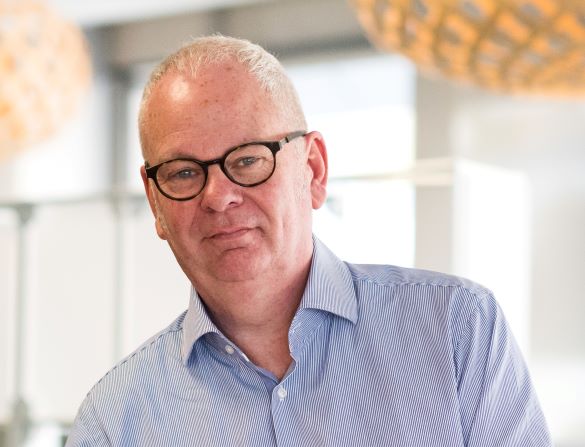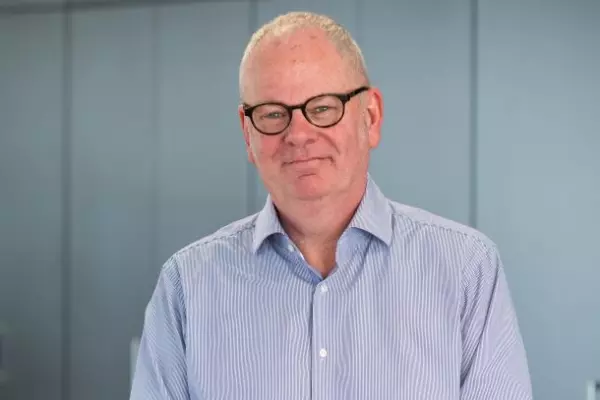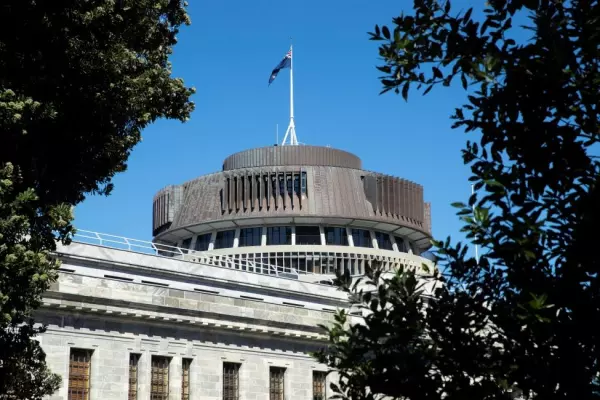Rachel*, a contact centre worker at the Ministry of Social Development (MSD), used to wake up each morning dreading going to work. As a result of bullying behaviour, she says she experienced from her managers, Rachel ended up getting counselling. Her doctor prescribed her a stronger dose of antidepressants to deal with her worsening mental health, and she was getting sick more often due to the stress.
“I thought I was a failure,” she says.
“It was like I was knocked down so many pegs. I just lost all confidence in myself.”
Want to share your public sector workplace experience in confidence?
Email [email protected]
To understand the extent of bullying in the public service, BusinessDesk asked more than 20 public service departments for the number of bullying and sexual harassment complaints they had received in the past five years.
We wanted to know whether the way the data was recorded was consistent across the sector, whether agencies asked the same questions of their staff in internal engagement surveys, and whether they used the same processes for employees to raise complaints.
As the Official Information Act (OIA) responses came through, it became clear they didn’t.
As senior employment lawyer Steph Dyhrberg says: “It’s pretty apparent that they don’t all ask the same questions, they don’t all collect the same sort of data, and it’s not done routinely and regularly across the public service.
“It’s very ad hoc.”
MSD, where Rachel works, codes employee complaints in its HR system based on "sub-types", including bullying and harassment. Others either don’t code complaints at all (usually because there are so few), or they don’t break them down, meaning it’s impossible to compare data on bullying across the public service.
Dyhrberg says senior public servants have asked her if this kind of comprehensive data exists. If it does, she’s not aware of it.
And this matters.
“You can’t manage what you don't measure,” Dyhrberg says. “If you don’t know the incidence then you don’t know whether any of the measures that you’ve put in place — your policies, your processes, any prevention steps — you don’t know if they’re effective.”
‘What did you do wrong?’
Working at MSD was great at first, Rachel says. But things started to sour when she got a new manager and the nature and hours of her work changed. Rachel enjoys the work and genuinely wants to help people, but says she and other contact centre workers are routinely abused by clients.
“I’ve had [clients] say, 'this is why Ashburton happened',” she says, referring to the 2014 shooting in a Work and Income office.
With a relentless volume of calls, workers are under pressure to continue regardless of how bad the abuse gets. The pressure was already intense when Rachel started having issues with her new manager.
The woman seemed to take an instant dislike to her, she says. The manager spoke to her in a baby voice, patronised and disparaged her in front of other workers. Rachel says she felt micromanaged by someone whose presence she found domineering. Once, she says, the manager pulled her aside to listen back to one of her calls, repeatedly asking her what was wrong with it until Rachel was in tears. Eventually, she sought union assistance and complained.
“As cheesy as it is, I’m in this job because I care about clients a lot,” Rachel says.
But her experience of bullying with managers at MSD made her doubt herself and her ability to do the job.
“I’m still working that confidence back up today,” she says.
'No tolerance'
According to the data, MSD recorded 53 bullying complaints between 2016 and 2020 and 29 sexual harassment complaints.
In its OIA response, the department stressed it had a no tolerance approach to bullying and harassment. MSD employs more than 9,000 staff. All of them are required to sign a code of conduct document setting out its expectations around professional standards.
MSD also has a positive workplace behaviour policy, which includes guidance around sexual harassment. Employees have multiple channels to raise issues, including the security, threats, accidents and risks (STAR) system for reporting sensitive events.
The department offers staff free counselling through its employee assistance programme. Staff can also seek support through a sexual harm helpline and a peer support programme, the OIA response said.
The reality gap
In the past five years, the 21 public service departments that responded to our OIA request (at least one got the request and didn’t action it), recorded at least 384 bullying complaints and 116 sexual harassment complaints.
This comes with big caveats. Some agencies didn’t code for bullying, others didn’t release the information on privacy grounds, there was use of both calendar and financial years, and some agencies didn't have data for the whole five-year period.
Dyhrberg believes that for departments collectively employing nearly 50,000 people, 384 bullying complaints over five years is small, especially when reported rates of bullying are much higher in independent surveys.
A 2021 survey by Diversity Works asked respondents if there had been reported incidents of bullying or harassment within their organisation in the past 12 months. 37.3% of public sector respondents answered yes to the question versus 34% in the private sector. A 2013 survey by the former State Services Commission found that 21% of staff in public service departments felt they had personally been bullied or harassed at work within the previous year.
Dyhrberg calls the discrepancy between complaints and perceptions of bullying within a workplace the reality gap.
“If you don’t get complaints that doesn’t mean nothing is happening,” she says. “It’s a bit like ‘out of sight, out of mind’.
“Working in this area, you absolutely understand why it’s so hard for people to make complaints. Part of that is the natural human reaction to fear.”
Aggression, passively
Zach*, a communications expert who worked for the Ministry of Education (MoE) as a contractor, says when he raised issues about concerning behaviour within his team, the manager brushed him off by saying it was a high pressure ministry and people were under a lot of stress.
A narrative had also been started, Zach says, that he was a troublemaker.
“If you raise an issue about the culture at an organisation, they have a choice: they can either take those concerns seriously and try to do something about it, or they can just paint that person as one single troublemaker.”
Zach never experienced outright animosity. Instead, he observed a pattern of what he calls passive-aggressive behaviour, including people being excluded socially; snide and belittling remarks; and inappropriate comments about what people were wearing.
Instead of raising complaints, people voted with their feet and left, he says.
Wellington is a small place - rather like a fishing village - and in the insular world of the public service, word gets around if people take formal action against a colleague. Zach says people might not complain out of fear it will be a black mark against them when they go for another job. As for him, he was happy when his time at the ministry came to an end.
“I can honestly say that I probably won't go back to the public service for some time.”
In its OIA response, MoE said bullying and harassment have no place at the ministry.
In 2017, the department amended its policy on preventing harassment and bullying, created sexual harassment guidelines for dealing with allegations, and created a centralised system for recording complaints (the department was unable to provide data from before the system was brought in).
In 2020, the ministry brought in ‘speak up’, a framework designed to support staff to raise complaints without fear of reprisal. It also offers free and confidential support services.
The OIA figures show 29 complaints of bullying and/or harassment between 2017 and October 2021, the vast majority of which were either withdrawn or not substantiated. There were four complaints of sexual harassment, three of which were substantiated.
Data divergence
BusinessDesk asked more than 20 government departments for copies of their latest staff surveys. Most helpfully provided the results, but a few provided only the questions.
This inconsistent approach extended to the surveys themselves. Despite talk of a more joined up public service, the questions asked of staff from department to department varied considerably, as did the length of time between surveys (the Ministry for the Environment provided a survey from 2016).
A number of surveys pointed to a relative lack of confidence among staff that agencies would properly deal with bullying.
A 2020 Oranga Tamariki (OT) survey returned a 58% result for a question asking staff if they trusted a bullying complaint would be fairly managed and a 52% score for a question asking if OT had clear and effective systems in place for dealing with intimidating behaviour and bullying.
Te Puni Kōkiri returned a similar result in a 2020 survey, returning a 51% score for a question asking staff if it had clear and effective systems in place.
The results in the latest survey commissioned by the Ministry of Culture and Heritage were generally positive, but some staff raised serious concerns about specific leaders.
“A minority of respondents made comments regarding leaders in the organisation which were very negative and/or concerning,” the report said.
As Dyhrberg says, staff need to have faith that bullying complaints will be dealt with fairly. If they see something bad happening and there isn’t a proper process, then there can be a devastating loss of trust in the employer, she says.
“If it’s not addressed and if it is really bad, then people will just leave. You’ll lose really good people.”
Better data across the ditch
In New Zealand, the term public service relates to 32 government departments and seven departmental agencies (it doesn’t include things like schools, hospitals or the police).
With this number of entities, it’s perhaps understandable that applying a unified approach to bullying and sexual harassment is difficult.
However, there is a central agency charged with leading and improving the performance of the sector: the Public Service Commission (PSC).
 Peter Hughes: "crowding out poor behaviour". (Image: Public Service Commission) Last year, the PSC surveyed 60,000 public servants working in 36 public service departments and departmental agencies. The census received about 40,000 responses.
Peter Hughes: "crowding out poor behaviour". (Image: Public Service Commission) Last year, the PSC surveyed 60,000 public servants working in 36 public service departments and departmental agencies. The census received about 40,000 responses.Did it ask about bullying?
The words "bullying" and "harassment" don’t appear anywhere in the questionnaire sent to public servants. Workplace culture does come up, though. Public servants were asked to respond to statements like: “The agency I work for supports and actively promotes an inclusive workplace.”
Contrast this with the approach taken by the Australian Public Service Commission (APSC) in its annual state of the service report.
The 20201-21 report includes the number of recorded complaints of harassment and bullying across APS agencies in the past year (588) as well as the percentage of respondents who said they had experienced harassment or bullying (11.7%).
Australian public servants were also asked to identify the type of bullying, the perceived source, whether the behaviour was reported and, if it wasn’t, the reason why (eg, someone thinking it could affect their career, or not thinking action would be taken).
Recalling when she first saw the Australian data, Dyhrberg says: “I got report envy.”
“They’re able to say from year to year whether things are getting better or worse and whether more measures are required, and that feeds into their strategy.”
Dyhrberg believes we should be collecting better data on bullying in New Zealand, and says the PSC is the logical agency to do that.
 Steph Dyhrberg: "survey envy". (Image: supplied)
Steph Dyhrberg: "survey envy". (Image: supplied)By collecting data in a standardised way, the commission could provide assistance to help lift standards across the sector, she says.
“If you don’t measure it, then you don’t know.”
Change comes from the top
Public service commissioner Peter Hughes acts as the employer of other public service chief executives. This comes with a statutory responsibility to review their performance.
However, we don’t know the precise details of what that looks like.
The commission previously refused on privacy grounds an OIA request from BusinessDesk for its expectations of CEs' performance. This means we don't know what weight Hughes places on bullying or other aspects of workplace culture in his annual reviews of the most senior public servants.
Megan*, a public servant working in Wellington who has witnessed bullying firsthand, thinks CEOs should be held accountable. She previously acted as a witness for a colleague who complained about their manager.
“There is absolutely no incentive or feeling of trust to raise anything because the previous person who did, even though her complaint was upheld, they’re gone and the boss remains,” Megan says.
Rightly or wrongly, she says there is a perception that some people, particularly those in senior positions or known to be close to them, are untouchable.
What would make things better?
Better data, Megan says. She wants to know that chief executives are being held to account for bullying statistics within their departments. If the rate is higher than the public service average, then pressure should be put on CEOs to do something.
“That’s probably the biggest way to crack down on it, to be honest, is to go from the top.”
Model standards but no central data
BusinessDesk asked the PSC if it knew how many formal bullying or sexual complaints were made across the public service each year.
Hughes said it didn’t.
“These are workforce and employment matters for the relevant chief executive.”
BusinessDesk asked why the commission didn’t request or require public service departments to ask a standard set of questions of employees in surveys to enable data to be compared.
Again, Hughes said chief executives were responsible for managing their workplaces. They were accountable for bullying within their departments, he said.
“The commission’s role is to issue guidance and model standards, as we have done with the positive and safe workplaces model standards.”
The OIA response from the commission revealed it hadn’t run any specific staff satisfaction surveys of its own staff. The commission encouraged two-way engagement in other ways, the response said, including through the 2021 public service census.
So why didn’t the census ask about bullying or sexual harassment?
Hughes said it was the first time the commission had surveyed the whole of the public service and the main focus was on understanding the composition and diversity of the workforce.
“I don’t rule out asking questions around the issue of bullying in a future census,” he said.
BusinessDesk asked the commission why there wasn’t a standard approach across the public service for raising and dealing with issues of bullying and sexual harassment.
Hughes said there was a standardised approach to promoting positive and safe workplaces. He appointed two public service chief executives, Ray Smith and Rebecca Kitteridge, in 2019 to lead a sector-wide workplace culture programme. The model standards were launched the same year.
“These set out minimum expectations for staff and organisations to help ensure positive workplaces,” Hughes said.
“Our focus is on creating positive and safe workplaces and crowding out poor behaviour, rather than standardising an approach around definitions and processes for bullying across the system.
“We think this is the more effective approach.”
Agencies used a range of tools to promote respectful behaviour and set expectations, Hughes said. Last August, health and safety and HR managers from 30 agencies met to share insights about best practice across the sector.
"The public service is a big workforce and not immune to the challenges all workplaces face, but I know chief executives are committed to ensuring our organisations promote a culture of respect, inclusion and trust so our people can do their jobs well for all New Zealanders.”
* Names have been changed at the request of interviewees to protect their identity.
Want to share your public sector workplace experience in confidence? Email [email protected]















